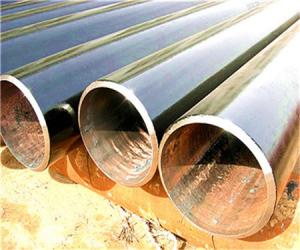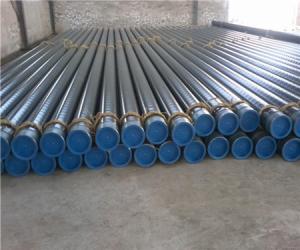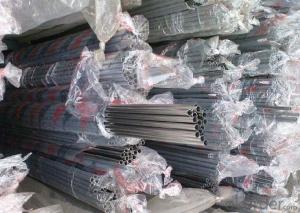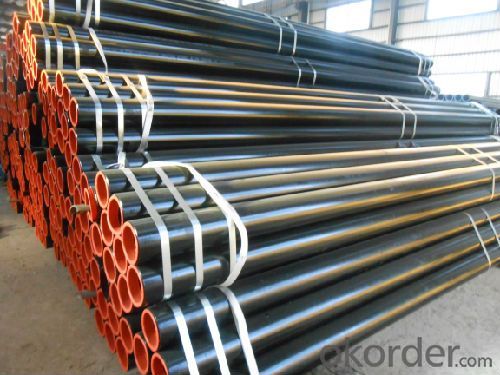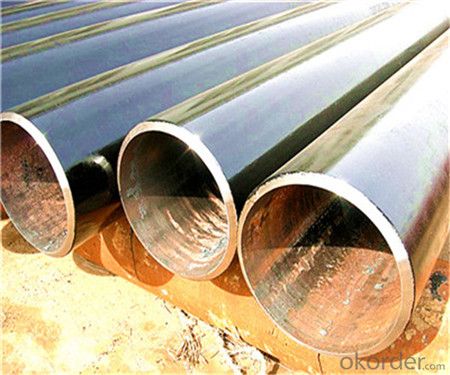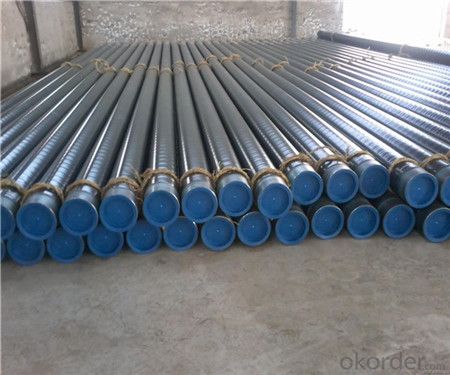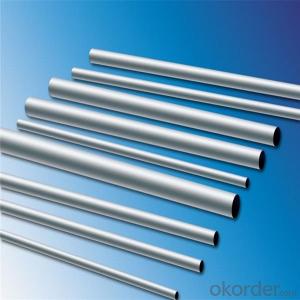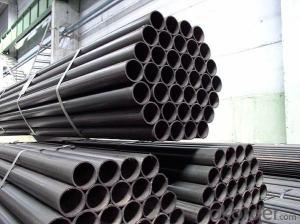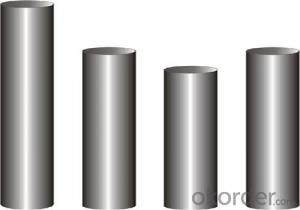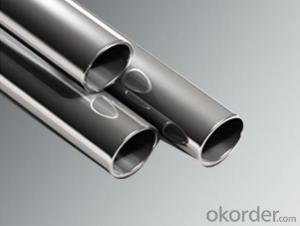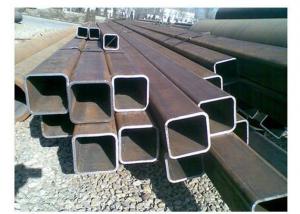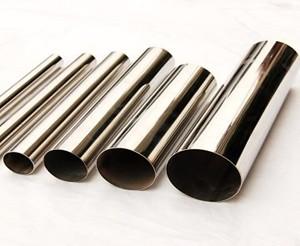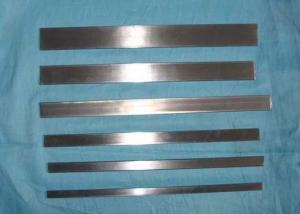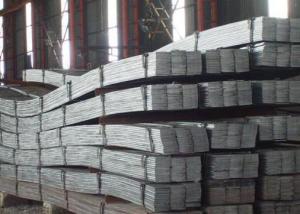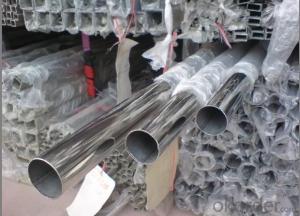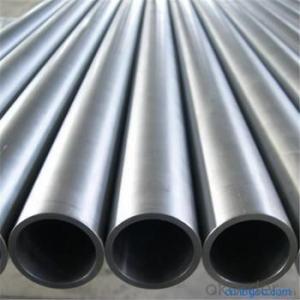Seamless Stainless Steel Tubes Steel Pipe manufacturer
- Loading Port:
- China Main Port
- Payment Terms:
- TT or LC
- Min Order Qty:
- 30 kg
- Supply Capability:
- 12000 kg/month
OKorder Service Pledge
OKorder Financial Service
You Might Also Like
1、Structure of Seamless Pipe ASTM A106/53:
Seamless pipe is formed by drawing a solid billet over a piercing rod to create the hollow shell. As the manufacturing process does not include any welding, seamless pipes are perceived to be stronger and more reliable. Historically seamless pipe was regarded as withstanding pressure better than other types, and was often more easily available than welded pipe.
Application
carbon seamless steel pipes are widely used in gas, water and oil, transpotation;constructions;Bridge,highway,windows of model steel door; building materials;fences;heating facilities Fluid Pipe;conduit pipe,scaffolding pipe.etc.
Payment Terms: L/C D/A D/P T/T
Packing and shipment
Packaged in bundles,as per customers' requirements, it can also bepackagesd as beveled ends, typed marking, black painting, plastic caps protection,woven bags packing
For 20" container the max length is 5.8m; For 40" container the max length is 12m. other options are available based on customer requests. Please discuss when placing orders.
2、Main Features of the Seamless Pipe ASTM A106/53:
• High manufacturing accuracy
• High strength
• Small inertia resistance
• Strong heat dissipation ability
• Good visual effect
• Reasonable price
3、Seamless Pipe ASTM A106/53 Specification:
Standard | GB, DIN, ASTM ASTM A106-2006, ASTM A53-2007 |
Grade | 10#-45#, 16Mn 10#, 20#, 45#, 16Mn |
Thickness | 8 - 33 mm |
Section Shape | Round |
Outer Diameter | 133 - 219 mm |
Place of Origin | Shandong, China (Mainland) |
Secondary Or Not | Non-secondary |
Application | Hydraulic Pipe |
Technique | Cold Drawn |
Certification | API |
Surface Treatment | factory state or painted black |
Special Pipe | API Pipe |
Alloy Or Not | Non-alloy |
Length | 5-12M |
Outer Diameter | 21.3-610mm |
Grade | 20#, 45#, Q345, API J55, API K55, API L80, API N80, API P110, A53B |
Standard | ASME, ASTM |
1) Material:20#(ASTM A 106/A53 GRB.API5LGRB,GB),45#,16Mn,10#.
2) Specification range:OD:21.3-610mm,WT:6-70mm,length:6-12m or according to the requirement of clients.
3) Excutive standards:GB,ASME API5L.ASTM A 106/A53,Despite of the above standards,we can also supply seamless steel pipe with standard of DIN,JIS,and so on,and also develop new products according to the requirements of our clients!
4) Surface:black lacquered,varnish coating or galvanized.
5) Ends:Beveled or square cut,plastic capped,painted.
6) Packing:bundles wrapped with strong steel strip,seaworthy packing.
4、Packaging & Delivery
Packaging Details: | seaworthy package,bundles wrapped with strong steel strip |
Delivery Detail: | 15-30days after received 30%TT |
5、FAQ of Seamless Pipe ASTM A106/53:
①How is the quality of your products?
Our products are manufactured strictly according to national and internaional standard, and we take a test
on every pipe before delivered out. If you want see our quality certifications and all kinds of testing report, please just ask us for it.
Guaranteed: If products’ quality don’t accord to discription as we give or the promise before you place order, we promise 100% refund.
②How about price?
Yes, we are factory and be able to give you lowest price below market one, and we have a policy that “ for saving time and absolutely honest business attitude, we quote as lowest as possible for any customer, and discount can be given according to quantity”,if you like bargain and factory price is not low enough as you think, just don’t waste your time.Please trust the quotation we would give you, it is professional one.
③Why should you chose us?
Chose happens because of quality, then price, We can give you both.Additionally, we can also offer professional products inquiry, products knowledge train(for agents), smooth goods delivery, exellent customer solution proposals.Our service formula: good quality+good price+good service=customer’s trust
SGS test is available, customer inspection before shipping is welcome, third party inspection is no problem.
6、Seamless Pipe ASTM A106/53 Images:
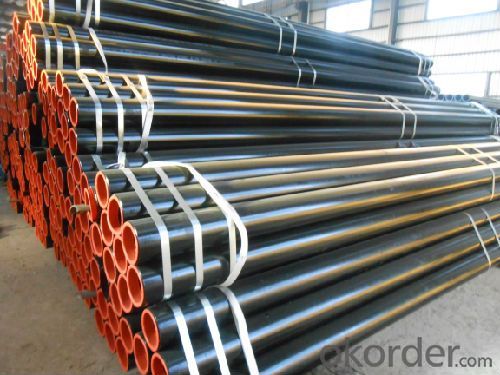
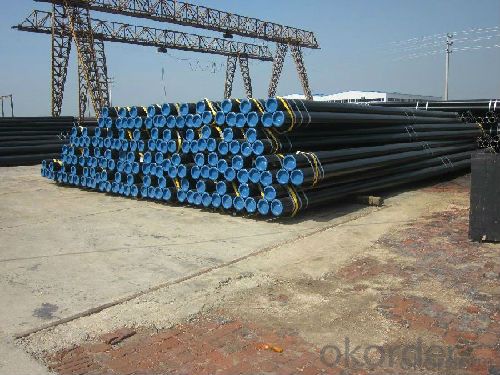
- Q: What are the weight limitations for stainless steel pipes?
- The weight limitations for stainless steel pipes can vary depending on various factors such as the diameter, wall thickness, and overall length of the pipe. It is best to consult the manufacturer or refer to industry standards and specifications to determine the specific weight limitations for a particular stainless steel pipe.
- Q: Can stainless steel pipes be used for firefighting systems?
- Firefighting systems can utilize stainless steel pipes due to their durability and resistance to corrosion. The material's ability to withstand heat, pressure, and chemicals makes it suitable for transporting water, foam, and other fire suppression agents. In addition to its high strength and ability to endure extreme conditions, stainless steel pipes are also recognized for their smooth inner surface, which reduces friction loss and maximizes water flow. This quality is crucial for the effectiveness of firefighting operations. Overall, stainless steel pipes offer a dependable and long-lasting solution for firefighting systems, ensuring safety and efficiency in critical situations.
- Q: What are the different types of stainless steel pipe reducers?
- There are several types of stainless steel pipe reducers, including concentric reducers, eccentric reducers, threaded reducers, and socket weld reducers.
- Q: Can stainless steel pipes be used for semiconductor manufacturing?
- Yes, stainless steel pipes can be used for semiconductor manufacturing. Stainless steel is highly resistant to corrosion, offers high temperature resistance, and has excellent mechanical properties, making it suitable for various applications in semiconductor manufacturing, such as gas and chemical delivery systems, vacuum systems, and process cooling.
- Q: Are stainless steel pipes suitable for underground water supply?
- Indeed, stainless steel pipes are a fitting choice for underground water supply. With its exceptional resistance to corrosion and rust, stainless steel proves to be an optimal material for underground usage, where pipes may confront moisture, soil, and other corrosive substances. Notably, stainless steel pipes exhibit durability, longevity, and possess a remarkable tensile strength, enabling them to endure the pressure and strain of underground installations. Furthermore, stainless steel pipes maintain hygiene and do not release detrimental chemicals or pollutants into the water supply. All in all, stainless steel pipes present a dependable and secure alternative for underground water supply systems.
- Q: Why is stainless steel magnetic?
- 304 stainless steel after cold processing, the structure of the structure will also change to martensite, and the greater the deformation degree of cold work, the more martensitic transformation, the greater the magnetic properties of steel. Like a lot of steel strips, the product is made up of 103 tubes, without obvious magnetic induction, producing 9.5 tubes. Due to the large deformation of the Ling bend, the magnetic sense is obvious, and the square tube produced by the utility model has larger deformation than the round tube, especially the folding part, the deformation is more intense, and the magnetism is more obvious. In order to completely eliminate the magnetic properties of the 304 steel caused by the above reasons, the stable austenite structure can be recovered by the solution treatment at high temperature so as to eliminate the magnetism. In particular, magnetic because it causes 304 stainless steel, and other materials such as stainless steel, carbon steel, magnetic 430 is not the same level, that is to say the magnetic steel 304 always showed a weak magnetic.
- Q: Can stainless steel pipes be used for underground water supply lines?
- Indeed, underground water supply lines can utilize stainless steel pipes. Due to its exceptional resistance to corrosion, stainless steel proves to be an excellent option for subterranean applications where the pipes may encounter soil, moisture, and other corrosive elements. Moreover, its impressive strength and durability characteristics guarantee that the pipes can endure the pressure and strain associated with burial. Additionally, stainless steel serves as a hygienic material that does not release any hazardous substances into the water supply, rendering it safe for drinking purposes. In conclusion, stainless steel pipes present themselves as a dependable and enduring choice for underground water supply lines.
- Q: Are stainless steel pipes suitable for solar power systems?
- Yes, stainless steel pipes are suitable for solar power systems. Stainless steel is highly resistant to corrosion, making it an excellent choice for solar power systems that are exposed to outdoor elements. Additionally, stainless steel pipes have high thermal conductivity, which helps in efficiently transferring heat in solar water heating systems.
- Q: Do stainless steel pipes require insulation?
- Yes, stainless steel pipes require insulation. Insulation helps to prevent heat loss or gain, reduces condensation, and maintains the temperature of the fluid inside the pipes.
- Q: How do you prevent pitting corrosion in stainless steel pipes?
- To avoid pitting corrosion in stainless steel pipes, there are several steps that can be taken: 1. Select the appropriate grade of stainless steel: Not all stainless steels are equal. Opt for grades that have higher corrosion resistance, such as 316 or 904L, which contain molybdenum and offer better protection against pitting corrosion. 2. Ensure proper alloy composition: Make sure that the stainless steel pipe contains the correct amount of alloying elements like chromium and molybdenum. These elements create a protective layer on the steel's surface, enhancing its resistance to corrosion. 3. Regularly clean and maintain the pipes: Clean the stainless steel pipes on a regular basis to remove any contaminants or deposits that could contribute to pitting corrosion. Avoid using abrasive materials or cleaners that might harm the protective layer. 4. Minimize exposure to aggressive environments: Reduce the stainless steel pipes' exposure to aggressive substances such as chloride ions, acidic solutions, or high temperatures, as these can accelerate pitting corrosion. If exposure is unavoidable, consider applying protective coatings or linings to create a barrier between the steel and the corrosive environment. 5. Employ cathodic protection methods: Implement techniques like sacrificial anode systems or impressed current systems to safeguard the stainless steel pipes. These methods create a potential difference between the stainless steel and a more susceptible metal, diverting corrosion away from the stainless steel. 6. Control water chemistry: If the pipes are used in water applications, monitor and control parameters such as pH, temperature, and chloride levels. Adjusting these factors within acceptable limits can help prevent pitting corrosion. 7. Adhere to proper design and installation practices: Ensure that the stainless steel pipes are designed and installed correctly, considering factors such as avoiding crevices, ensuring proper drainage, and preventing stagnant areas where corrosion can occur. Proper insulation and the use of compatible gaskets or flanges can also prevent pitting corrosion. By following these preventive measures, the risk of pitting corrosion in stainless steel pipes can be significantly reduced, leading to a longer lifespan and maintained structural integrity.
Send your message to us
Seamless Stainless Steel Tubes Steel Pipe manufacturer
- Loading Port:
- China Main Port
- Payment Terms:
- TT or LC
- Min Order Qty:
- 30 kg
- Supply Capability:
- 12000 kg/month
OKorder Service Pledge
OKorder Financial Service
Similar products
Hot products
Hot Searches
Related keywords

